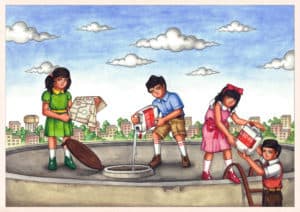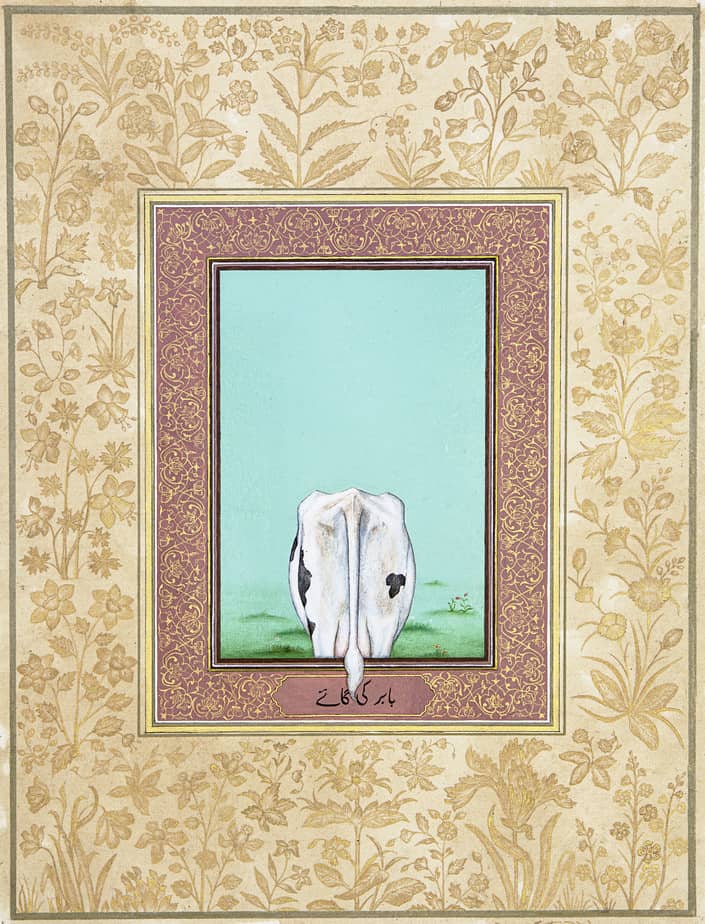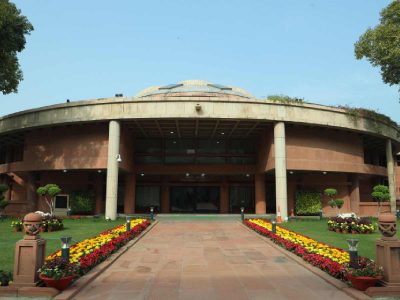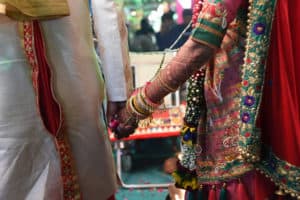In the present political context, a group exhibition attempts to take a look at the prevalent myths in society and satirise it in the artists’ own unique perspective
Politicians in India tend to mix up their facts more often than not. Twisting history at their own convenience, they declare certain shared beliefs and myths as if they were actual facts of history.
Take Rajasthan BJP chief Madan Lal Saini, for instance. While addressing reporters in July this year, he claimed that Humayun on his deathbed told Babur to respect cows if he wanted to continue ruling India. Giving this statement in the aftermath of the Alwar lynching case by cow vigilantes, he clearly mistook Humayun to be the father of Babur, who died 25 years before him.
In this context, an exhibition is focusing on contemporary myth-making, bringing together a group of artists who takes a satirical look at the current socio-political situation and create their own fiction. The group show by Gallery Latitude 28 showcases works of 19 artists from India and abroad.
The exhibition title ‘Babur Ki Gai’ refers to a key work by one of the artist Priyanka D’Souza, who claims to have found new evidence to the lost pages from the Baburnama folio. Intrigued by the controversy around Saini’s comment, she created her own fictional myth by painting three folios. Inspired while sketching grazing cows on the Alps in Austria, the paintings come with a disclaimer that ‘Gallery Latitude 28 is not to be held responsible as to the authenticity of this information. Beware of fake news.’
Priyanka came across a news article in which researchers suggest that the mention of cow slaughter happens not in the Baburnama but in his wasaya or will, which has been proven to be a 17th century forgery. “The article explained my concerns beautifully and just framed it perfectly. I like to use fiction as a political tool to redress or subvert the lacunae in the official and unofficial historical accounts,” she explains. The three paintings come with inscriptions of ‘Babur ki Gai’, ‘Humayun ki Gai’ and ‘Meri/Kiski Gai’ respectively on each of them.
“As such, the title encapsulates the casual volleying of certain shared beliefs and myths as if they were actual facts of history in order to achieve political ends, and the general discrediting of the truth in a world that increasingly traffics in brutality and fake news,” says Bhavna Kakar, director and founder of the gallery.
Kakar, an arts student, has always been interested in mythology and wanted to explore the idea of contemporary myths for quite some time. “Mythology, myth-making and fiction are parallel to each other, but not necessarily the same,” she adds.
Introducing young emerging artists in the Gallery, the exhibition displays over 50 paintings. Several fresh works of these artists — which includes paintings and sculptures — will be on display for the first time. While some have drawn inspirations from mythology, old literature and poetry to illustrate and create a mythical character out of it, others have created their own myth with self-portraits.

Another artist, Amritah Sen, depicts some of the most commonly used phrases and sayings in her native Bengal that have acquired mythical status, like ‘Netaji will come back’ and ‘Kolkata is doomed’. While Priyesh Trivedi’s Adarsh Balak series subverts the imagery of state-sponsored idealism, recognisable through certain educational charts used by school children in making social science scrapbooks.
‘Acid Test’ — one of the paintings from the series — shows children pouring LSD from canisters into water tanks. The piece depicts the stark imagery of children indulging in dubious activities, which aids the beholder to understand the gravity of the issue being portrayed. It is a critique and parody of the educational posters that were widely circulated in Indian schools in the late 1980s and early 90s.
Reimagining the missing Sanskrit manuscript Chandrakalas composed by a mysterious sage in the 4th century BC, artist Shilo Shiv Suleman, the founder of ‘The Fearless Collective’, has created a site-specific work that celebrates female sexuality. They create alternate people led narratives that engage cultural and political realities.
Painter Elancheziyan undertakes the method of opening up a conversation with the viewers on lived realities by juxtaposing the suffering soul’s despair. He weaves lived narratives into Indian meta traditional art, portraying the overcoming of fears that rise within oneself.
The exhibition explores how history gets changed and at how at one point myth becomes reality. Examining the oxymoron of contemporary history, the exhibition also answers why artists are increasingly turning to fabulations and futurisims in the current times? “The exhibition is absolutely relevant to the current political scenario. Come and be a part of this fictional narrative,” concludes Bhavna.
The paintings are on display at Gallery Latitude 28 from October 25 to November 20. Drop in to get a glimpse of artworks that attempt to demystify myths in their own way.





